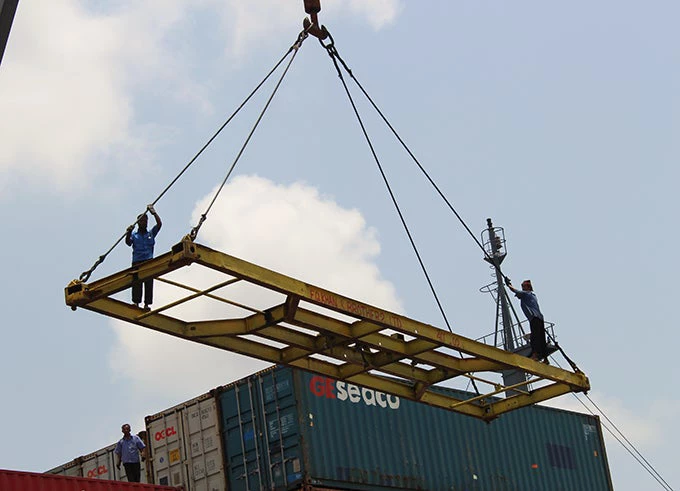
This blog is part of the series #OneSouthAsia exploring how South Asia can become a more integrated, thus more economically dynamic region. The blog series is a lead up to the South Asia Economic Conclave, an event dedicated to deepening existing economic links through policy and investments in regional businesses.
Imagine a South Asia without borders. People, industries, goods and services flow freely in the most profitable way for all. Imagine that necessities sorely needed in one area are freely available from areas where there is plenty. South Asia’s story of poverty amidst plenty would begin to change.
As an example, a recent World Bank study concluded that an unrestricted electricity trade provision could save $9 billion a year in electricity supply costs in South Asia, and also reduce carbon dioxide emissions as the bulk of this energy would come from renewable Himalayan hydro sources.
This would begin to transform the lives of some 400 million citizens who still live without electricity. Imagine what that would mean for productivity and human development.
These are some of the possibilities that most of the commerce ministers from South Asia, together with leaders of business and industry, media and the arts, will be discussing for three days in Delhi at the first South Asia Economic Conclave.
The theme of the Conclave is “ Achieving Growth Through Deeper Economic Integration”. We are grateful to the Government of India, the Confederation of Indian Industry, their sponsors and partners for hosting this timely event.
The fact that the Conclave was postponed from May 2015 following the tragic earthquake in Nepal is itself a reminder that regional integration is not just an economic aspiration. It can save lives and offer long-term solutions to natural disasters in one of the most disaster-prone regions in the world.
During the past decade, more than 800 million citizens of South Asia have been affected by disasters. Billions of dollars of hard won economic gains are irreparably destroyed. This is nothing short of a catastrophe for human security and development.
The anguish that lies in those statistics, compels us to find regional solutions to common problems. Climate change respects no boundaries and pollution does not require a customs clearance.
Similarly, we look at poverty as a regional problem in a globalized world because vast areas of the sub-continent—including many border areas-- remain outside South Asia’s impressive growth story.
Today, about 40 percent of the world’s poor live in South Asia. This is unacceptable for a region as heavily endowed with natural assets, talented people and an ancient civilization. In fact, historians note that when the British arrived in undivided India in the 17 th century, the country accounted for 23% of global economic output.
After two centuries of turbulence, the long arc of history is bending once again in favor of an Asian Century and it’s not just China and ASEAN propelling global growth.
Today, South Asia is the fastest growing region in the world, with average economic growth forecast at 7% in 2016.
The impetus for growth is supported by many new governments in many South Asian countries that are responding to their citizen’s aspirations for a better life and the search for opportunities beyond their borders.
Unfortunately, those economic opportunities are rare in the neighborhood because conditions are such that it is far more expensive to trade within South Asia than with Europe or America. This has to change.
We must boost growth by securing opportunities much closer to home. Consider the potential in the hydropower of Bhutan and Nepal, the textiles of Bangladesh, the IT and services sector in India, the resource corridors of Afghanistan and Sri Lanka, tourism from Maldives and light manufacturing from Pakistan.
Of course there are challenges. We learned to weather seemingly unresolvable challenges in the World Bank Group-supported Central Asia South Asia Transmission Project, involving 4 countries, 2 regions and several development partners. The project took nine years to start off but now that it has, it will enable the Kyrgyz Republic and Tajikistan to export 1300 MW of surplus power to Afghanistan and Pakistan while helping establish Afghanistan as a viable land link instead of a land locked country.
We believe that removing barriers could expand intra-regional trade from $28 billion today to $100 billion within 5 years. It’s an exciting vision and we at the World Bank Group have been pursuing it with determination for the last five years with our partners. Our portfolio of $900 million regional projects includes analytical studies and policy recommendations as well as financing and technical assistance to energy, trade and transport and natural disaster management.
For instance, the Mizoram Roads Regional Connectivity project is designed to increase transport connectivity along regional trade corridors in Mizoram, and to provide quicker and safer access to all parts of the state and to neighboring states as well as to Bangladesh and Myanmar.
Similarly, we have begun producing a pointed and topical series of cross-border policy notes, called SARConnect to stimulate the dialogue on regional integration. One of the notes discusses the perception that economic integration is a threat to small countries. In fact, experience from around the world shows the opposite.
This brings us to the very important role of the private sector in providing the nuts and bolts that help integrate economies. Companies, regardless of their size, must have the confidence to increase their investment in the region. Do you know that less than 2 percent of total trade investment made by South Asia is intra-regional? This denotes a historical mindset that has kept the region poor despite its innate wealth.
Well known historian Francis Fukuyama in his book titled Trust: The Social Virtues and The Creation of Prosperity said social capital was as important as physical capital in building economic prosperity.
We can do this by encouraging more people to people contact through tourism and exchange programs. A number of newspaper surveys confirm South Asians, particularly youth, are asking their leaders to fulfill their aspirations, so the Asian Century will not leave them on the sidelines. We can support the development of regional value chains that weave the sub-continent together, providing the best solutions for boosting production, labor markets, the movement of goods and services and investment.
In the process of facilitating cooperation within South Asia, we can learn lessons from several remarkable regional initiatives that have improved the lives of millions of the poor for the better.
South Asia has already lifted the second largest number of people out of poverty in history but we have still to unleash the transformative power of its 1.7 billion people which includes 26% of the world’s youth. Their tomorrow is in our hands today. Let’s make history.
To read more about SAEC 2015, please read Recommendations of Conclave
This blog was originally published on Huffington Post on 28 September 2015


Join the Conversation